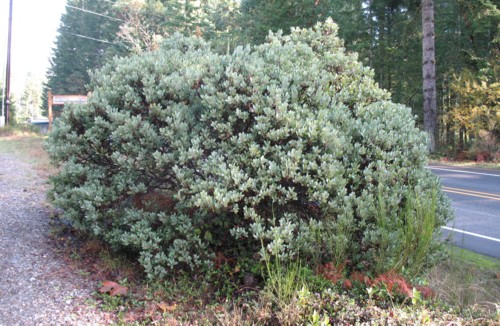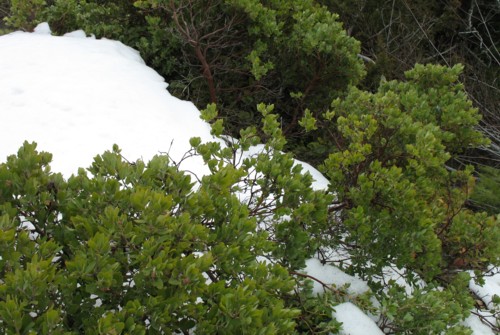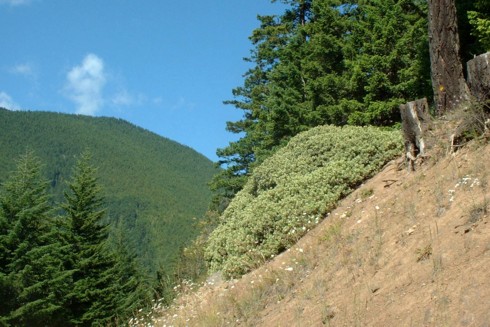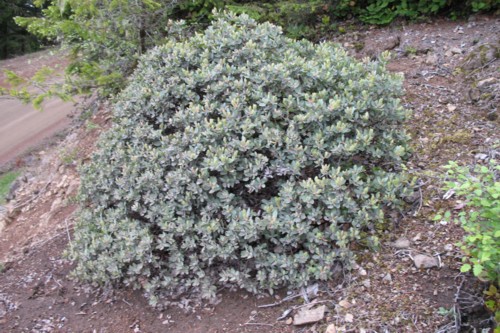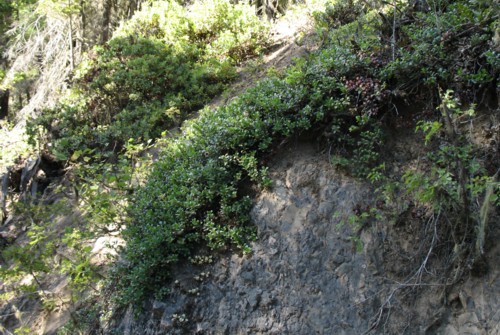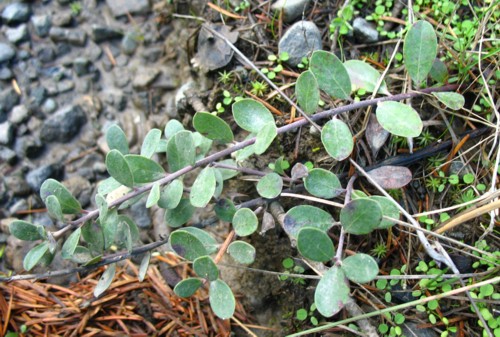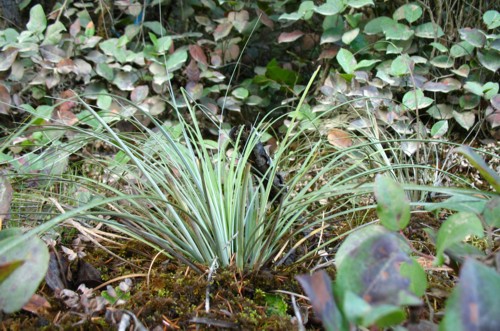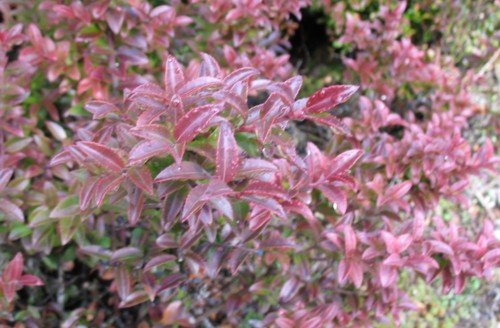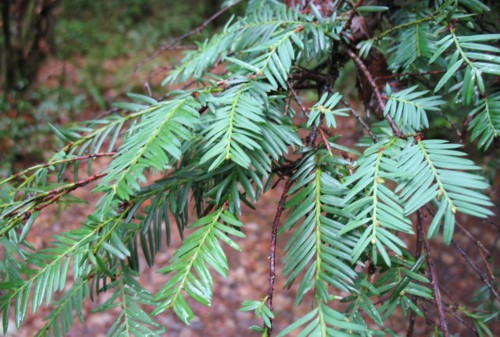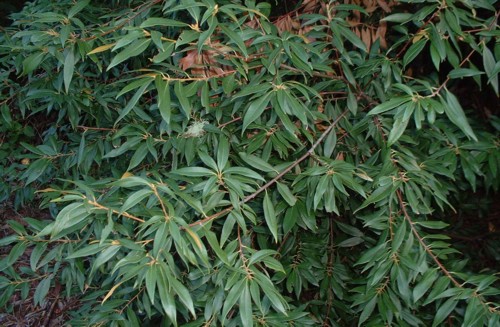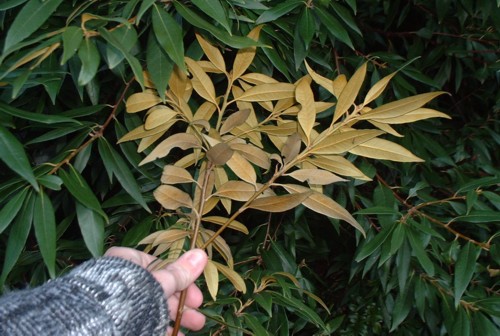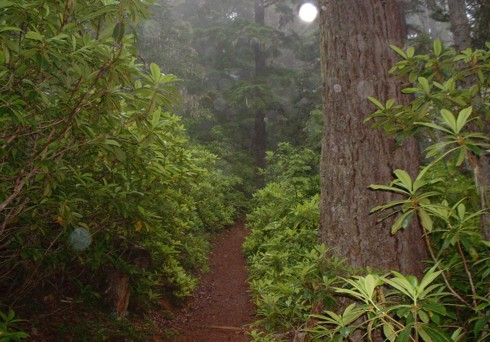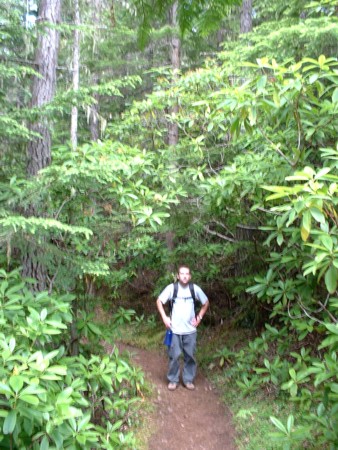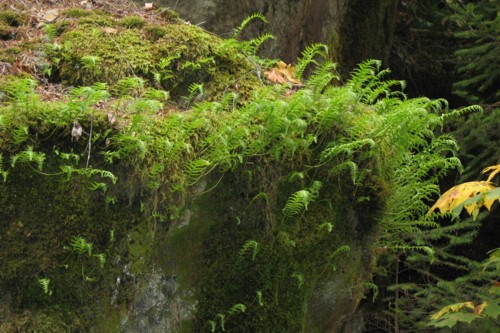|
Summer and Fall 2006 Page 1 | Page 2 >> One of my favorite places locally to look for plants is the Olympic Peninsula. This region contains not only the renowned temperate rainforests, found mostly on its southern and western slopes, but also many interesting plants on the east side of the mountains and at lower elevations near Hood Canal. Seattle area gardeners are frequently unaware of how much the native flora of the region changes as you move from east to west across the Puget Trough. On the west side of the basin you find many more California-like plants including enormous Ceanothus velutinus var. hookeri, Arctostaphylos and Arbutus in abundance, and even Chrysolepis chrysophylla, the Golden Chinkapin, an evergreen oak relative most commonly found in California and Oregon. Also, other plants that occur frequently at rather high elevations in the Pacific Northwest extend to surprisingly low altitudes here, including Xerophyllum tenax, Pinus monticola and Pinus contorta var. latifolia. One probable reason for this difference include a very slightly more continental-like climate, resulting from the frequent pooling of cold air that mostly bypasses Seattle and stacks up along the east side of the Olympic Mountains whenever cool air moves in from the east in winter. Other reasons include the overall higher altitude (much of the land is 500-1000 feet up), and thinner, rockier soil. Precipitation in this region varies from 60-100 inches annually in the south, to as low as 15-20 inches annually at the north end in the Olympic Rainshadow. By contrast, on the east side of the Puget Trough, rainfall is generally 30-50 inches throughout the region (though it increases again as you go east into the Cascade foothills). In the driest places on the northeast corner of the peninsula you even find Opuntia fragilis, which is pictured here. Here are a few pictures of plants on the Olympic Peninsula, mostly from summer and fall 2006, but some from earlier trips as well.
Washington has four native species of Arctostaphylos, but to my knowledge only two are found on the Olympic Peninsula. This is A. columbiana, hairy manzanita. Its foliage color ranges from blue to green, and it is usually a shrub 4 - 8' tall. Like all shrubby Arctostaphylos, it prefers dry, rocky sites, and has a beautiful contorted form with smooth dark red bark. This is an especailly nice specimen growing right by US 101 in Potlatch. Rainfall here is a whopping 90" annually, but manzanita thrives as long as it has good drainage and a summer dry period. The wettest place I have seen this species is above the Washington and Jefferson Creek drainage around 3,000', where rainfall probably exceeds 120". They are also found in the driest parts of the Olympic Rainshadow, where they may reach a very large size.
A close-up of the nice blue-grey leaves of the above plant.
Arctostaphylos columbiana is usually reported as growing at low altitudes, but on the east slopes of the Olympic Mountains it can be found surprisingly high up, such as these plants on the road to Hurricane Ridge at 3,000'. These plants are quite a bit greener, resembling forms of this species from coastal Oregon.
...and these enormous plants high above the Dungeness River Canyon, also at 3,000'.
There are some nice blue-grey forms of A. columbiana on Mt. Walker. This one is at 2,500'.
The highest altitude I have ever found A. columbiana is at 4,500' on the road to Deer Park. Here, the plants get smaller and lower as you increase in elevation, and they are buried in snow every winter. The Deer Park area on the dry side of the Olympic Mountains is quite interesting, with open forests of dead burned trees and lots of lodgepole pine, reminding me of the interior mountain ranges of the West. The manzanitas are frequently found growing with the pines.
Here our other species of Arctostaphylos, A. uva-ursi (kinnikkinnik), is growing alongside A. columbiana along the road to Deer Park. It goes up a little bit higher, to 5,000'. This groundcover has become quite common in Seattle area gardens.
Near Lake Cushman I found this interesting form of Arctostaphylos uva-ursi with green-grey leaves. This is growing at about 900' altitude in an area that receives more than 100" of annual precipitation.
Where both Arctostaphylos species are growing together, an intermediate hybrid, A. x media, can be found. This plant is along the road up Mt. Walker.
Xerophyllum tenax is a grass-like Yucca relative native to the mountains of the Pacific Northwest. Here, in the same place as the grey-leaved kinnikkinnik, it grows at much lower than usual elevations. I have seen it as low as 400' in Mason County. It is spectacular in flower - maybe I will get a picture of the flowers in the future. The leafy plant in this picture is salal (Gaultheria shallon).
Vaccinium ovatum, evergreen huckleberry, is one of the Northwest's best native ornamental shrubs. It is known to turn a bit red in the winter, but here some exceptional purple colored forms can be found, such as these plants hear Hoodsport.
Taxus brevifolia, the Pacific yew (from which we get taxol) can be found hidden deep within the river valleys of the Olympic Peninsula's east slopes, and on some lower mountainsides.
Chrysolepis chrysophylla, the golden chinkapin, makes its claim to fame as one of two large broadleaf evergreen trees native to Washington state, the other being madrona (Arbutus menziesii). Chrysolepis, however, is much rarer in our state, being found only in a few places on the east side of the Olympic Peninsula near Eldon, and in the Wind River drainage in Skamania County. This plant is the only one I know of growing right on US 101. If you know just where to look, you can see some very large trees far up the hillside from the highway.
The beautiful golden leaf undersides of Chrysolepis chrysophylla. "Chrysophylla" of course means "golden leaved." It looks like it would make a fabulous ornamental tree for the garden, but seeds are difficult to find and collect, and many cultivated plants die of root rot.
Deeper in the forest, one can find more Chrysolepis trees well away from Hood Canal near Washington Creek.
In some places, impressive stands of Rhododendron macrophyllum, Pacific Rhododendron, can be found. Frequently it forms a middle storey of vegetation between the canopy and the forest floor, as here on the trail to Mt. Townsend. Given the popularity of Rhododendron hybrids in cultivation in the Pacific Northwest, one wonders why this species isn't used in breeding schemes, as it is impressive and showy in flower and is one of the most drought tolerant species. It even occurs in the driest parts of the Olympic Rainshadow.
This picture from the Dungeness Canyon is regrettably out of focus, but it shows just how large Rhododendon macrophyllum can get in some places, the tallest plants approaching 25'. It almost resembles the magnificent Rhododendron forests of the Sino-Himalayan region. The highest altitude I have seen this plant is about 4,200'.
At higher elevations, a deciduous Rhododendron, R. albiflorum can be found.
Polypodium glycyrrhiza is a common epiphytic fern seen all around the Pacific Northwest. It is often seen on bigleaf maple (Acer macrophyllum), but in wetter areas it can be found on rocks, logs, and anything that will hold it up. Unlike many ferns that produce new growth in the spring, the new fronds of this species develop following the first rains in fall, as here west of Eldon. A more exciting species is P. scouleri, which forms large colonies on the sides of trees and looks very tropical, but it is only found on the immediate coast - it will have to wait for another photo gallery.
Asarum caudatum, wild ginger, is a native woodland plant whose roots can be cooked and eaten. It is occasionally cultivated in the Northwest.
Yours truly botanizing on Mt. Walker with Rhododendron and Arctostaphylos. |
